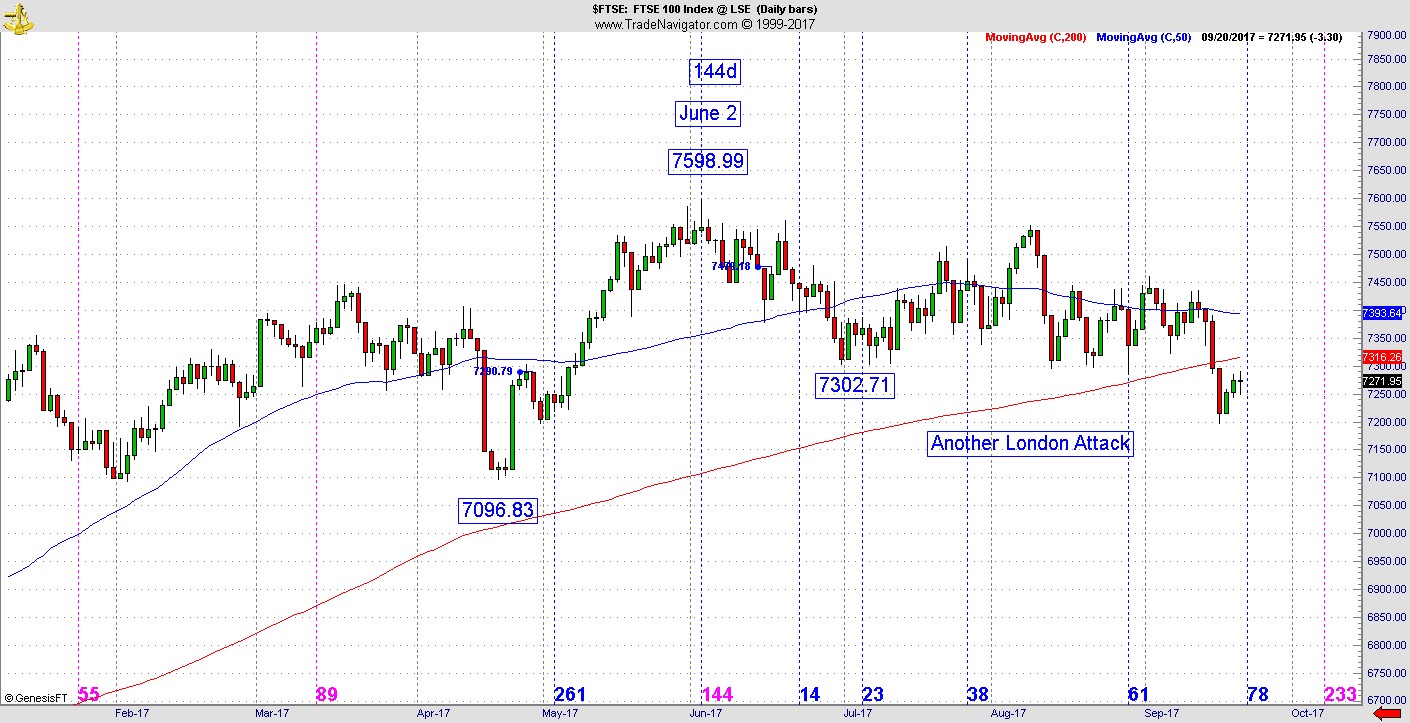Financial markets change direction throughout the year and tend to do so close to the change of season. This goes for all financial markets, not just stocks, asserts Jeff Greenblatt, director of Lucas Wave International and editor of The Fibonacci Forecaster.
Get Trading Insights, MoneyShow’s free trading newsletter »
Many things could’ve gone wrong in September but haven’t.
First, the debt ceiling can was kicked down the road for three months. Given Trump didn’t want to use Hurricane Harvey relief as a political football, that turned out to be a good thing. Realize that was before anyone knew what Irma was going to do. Irma was bad but it caused more individual misery (micro) as opposed to stressing the (macro) financial system. It remains to be seen what Maria will do.
In terms of taxes, supposedly a plan will be made public and sent to committee on September 25.
Advertisement
Even the geopolitical situation in North Korea has not erupted.
Does that mean we are out of the woods? Not by a long shot. The CBOE Volatility Index (VIX) remains historically low.
A University of Michigan consumer survey shows mom and pop investors have never been more bullish as nearly 65% believe stocks will still be higher in a year. Zero Hedge reports according to Deutsche Bank: “Global asset prices are the most elevated in history.” There are other signs as well. But very few are listening.
Why? Perhaps they don’t take it personally. Last Friday was very instructive as to the nature of this market. As we know there was yet another terrorist attack in London, this time in the subway. Once upon a time, in July 2005 an attack on the London transportation system was the bad news headline that was the termination point to a correction across the board in a young bull market. The news was so shocking it was literally our blood in the streets moment. All markets turned up the next day.
This time? The only market that reacted was the FTSE. The DAX, CAC and US markets failed to respond in a meaningful way last Friday. They had ample opportunity to do so since it hit in the morning rush hour.
Why didn’t these other charts react? It didn’t happen to them. There are a couple of ways to look at this. First of all, if there is a black swan, even a smaller one, markets are likely to react. Then consider the complacency, people have become inured to attacks. Unfortunately, people can get used to anything.
That’s not good because it means eventually it’s going to fall. It always does. But in the near-term conditions have improved. We’ve discussed a rotational, divergent market where money came out of the PHLX/KBW Bank Index (BKX) and into the NYSE Arca Biotechnology Index (BTK) and the rest of tech.
Banking has improved in the recent leg. The one area of concern has been the FAANG stocks which have been lagging. We remember a time only three months ago when they were holding up the market and Goldman issued a report suggesting they were as safe as the bond market. That was the first time they showed any vulnerability.
Wednesday the Fed elected not to raise rates but at the same time said they intend to start working at normalizing their balance sheet. They may very well raise in December and several times next year.
For now, they seem pleased with the way unemployment is going. The initial reaction by the stock market it initially dropped but recovered while the US dollar loved the news and precious metals were weak. They’ve been weak as they’ve overcome several of my vibrational square out readings in the past few days.
Finally, we’ve hit on the change of season which is otherwise known as the seasonal change point. Financial markets don’t go straight up or down. They do change direction throughout the year and tend to do so close to the change of season. This goes for all financial markets, not just stocks.
Stay on your toes. Just because the crowd is complacent doesn’t mean you should be.






















